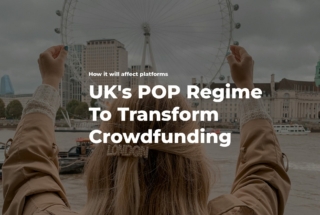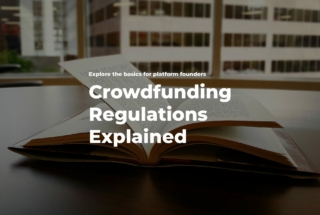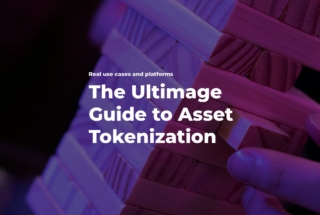Top 10 Mistakes When Launching a Crowdfunding Platform
No time to read? Let AI give you a quick summary of this article.
Building a crowdfunding business is a challenging process. Like any online business, it requires careful planning, market analysis, budget planning and resource allocation. At LenderKit, we’ve been working with entrepreneurs, startups and SMEs for years, and we identified the top 10 mistakes that people make when it comes to launching an online investment platform.
While this list is not exhaustive, we think these are the most relevant and important aspects to consider when starting your crowdfunding platform.
What you will learn in this post:
Investing in a tech solution too early
One of the biggest mistakes entrepreneurs make when launching a crowdfunding platform is focusing too much on technology too soon. Many founders believe that a cutting-edge platform is the key to success, but without a solid business plan, even the best technology is meaningless.
The initial priority should be defining the business model1, understanding the target audience, and establishing a marketing strategy before making significant investments in software development. Starting with the development of a complex technological infrastructure without a clear strategy will most likely result in the loss of resources and a product that fails to meet actual market needs.
This is why it is recommended to validate your business model and understand your target audience before committing to significant tech investments. Premature investment in technology can result in a platform that doesn’t align with user needs or market demands.
But most importantly, it will drain your resources — time and money — and will not lead to a sustainable business model.
Lack of a clear niche focus
If you try to make your platform appealing to everyone, it will most likely fail. Some platforms try to cover too many areas2 and offer debt, equity, and donation-based crowdfunding under one umbrella. This lack of specialization can make it difficult to differentiate from competitors and attract the right audience.
Successful platforms focus on a specific niche, such as real estate, creative projects, medical fundraising, or startup investments. This is why it is better to target a clear audience3 and cater to its specific needs. This will help your business to gain a competitive advantage.
The reason is very simple — if you choose to target “everything and everybody” you will be competing against the big players that already have everything that you were probably going to offer, but they just do it better and have a stronger brand than someone who is just starting out.
Unnecessary innovation as the major selling point
When you already have an established platform, adding cool features like AI, tokenization or a secondary market will enhance your product offering. Most importantly, it could be done in a controlled environment where if your disruptive concept fails, you are still landing back onto your working business model.
However, if you are just starting out, adding AI, tokenization, blockchain and a secondary market to your platform will add unnecessary complexity and stress. It increases the required budget, time to launch and adds an extra challenge to finding the right product-market fit.
Ignoring regulatory compliance
Equity and lending-based crowdfunding are highly regulated industries. Failing to consider legal requirements can lead to significant issues.
Many founders launch their platforms without consulting specialists or ensuring that their business model aligns with local regulations. This oversight can result in fines, legal action, or even forced closure. Entrepreneurs must research compliance requirements4, analyze their business in line with regulations, and work with legal professionals to ensure their platform operates legally from the start.
Weak marketing strategy
Some crowdfunding platform founders believe that once you have a platform, project owners and investors will find out about it. But just launching a platform is not enough. You have to build a strong marketing strategy to attract users and clients.
It is recommended to define the marketing strategy and build a community before the platform is launched. Also, it is a must to think about content, social media engagement, and targeted advertising.
The best way to start is to create a waiting list of potential users before the launch — it will significantly increase the platform’s visibility and contribute to its success.
Unrealistic revenue expectations
Many founders assume their crowdfunding platform will generate significant revenue from the first day of its operation. However, it will take some time till the new business starts delivering profit.
For example, a common mistake is assuming that transaction fees alone will generate sufficient revenue from the start. Crowdfunding platforms take time to gain traction, and overestimating early profits can lead to financial instability or even cause the business to fail. This is why founders shall set realistic revenue expectations and plan for gradual growth. Successful crowdfunding businesses incorporate premium features, advertising services, partnerships, and subscriptions to diversify their revenue streams. Also, it is important to secure alternative funding sources.
For examples, here’s how StartEngine5 — an equity crowdfunding platform6 — makes money.
| Service | Cost |
| Certificate of Good Standing | $20.00 |
| Promote Creative Package | From $200.00 |
| Campaign Page Services (Drafts, Edits, Changes) | $500 – $3,000 |
| Material Amendment | $1,000.00 |
| Form C-AR Filing Fee | $1,000.00 |
| Disputed Transaction Fee | $15.00 |
| Bad Actor Checks (1–20x) | $100 – $2,000 |
| Feasibility Report | $7,000.00 |
| StartEngine Premium Fee (Upfront) | $3,000 – $5,000 |
Ignoring operational costs
Running a crowdfunding platform involves more than just building the technology. Operational expenses, including payment processing, user verification, platform maintenance, software licensing, regulatory compliance, legal fees, and marketing costs, can add up quickly. Many entrepreneurs don’t consider these expenses, and it can lead to financial instability of the business or even bankruptcy. This is why it is important to have a detailed financial plan that will include all operational costs.
Fully relying on external funding
Some founders rely entirely on external funding sources7 such as grants or sponsorships to launch their crowdfunding platform. While external funding can provide initial capital, it is not a sustainable business strategy. Without a plan for generating consistent revenue, platforms risk financial instability once initial funding runs out. Entrepreneurs should focus on building a self-sustaining business model rather than depending solely on outside investments.
Having one client as a foundation for your business
Basing an entire crowdfunding platform on a single project or client is a mistake that can lead your business to failure. If a platform relies too heavily on one fundraising project, its viability is at risk if that client withdraws or if the project simply closes. A successful platform requires a diverse range of projects and a steady stream of new campaigns.
Investing in custom development without solving all the above
Many entrepreneurs focus on custom platform development before addressing the main challenges of their business.
Ignoring issues such as unclear revenue models, poor marketing strategies, regulatory compliance, and the absence of reliable long-term funding sources and a detailed financial plan while investing heavily in software development is a dead-end approach. Instead of immediately building a custom solution, founders should research the existing platforms and test their business models, determine the target audience8 and build a community, ensure that the platform is compliant with all regulatory requirements, and secure funding.
Feeling ready to launch your crowdfunding platform?
While it’s difficult to launch a crowdfunding platform, it’s not impossible with the right attitude, strategy and planning. While you are taking care of the business side, LenderKit takes care of the technical side of your business.
With our flexible and customizable white-label crowdfunding software, you can save time and cut the development costs in half, while still having the benefits of both worlds — a ready made platform for a quick market launch and a fully scalable solution to cover your needs as your business grows.
To find out how our software works and discuss your requirements, please get in touch with our team.

Article sources:
- Crowdfunding Platforms Business Plan Template & Example [Updated 2025]
- Crowdfunding
- How to Create Your Own Crowdfunding Platform | Truust
- Online legal and ethical issues: Legal Challenges in Crowdfunding Campaigns - FasterCapital
- StartEngine
- - YouTube
- Funding sources
- Crowdfunding Marketplace Business Plan Template & Example [Updated 2025]



